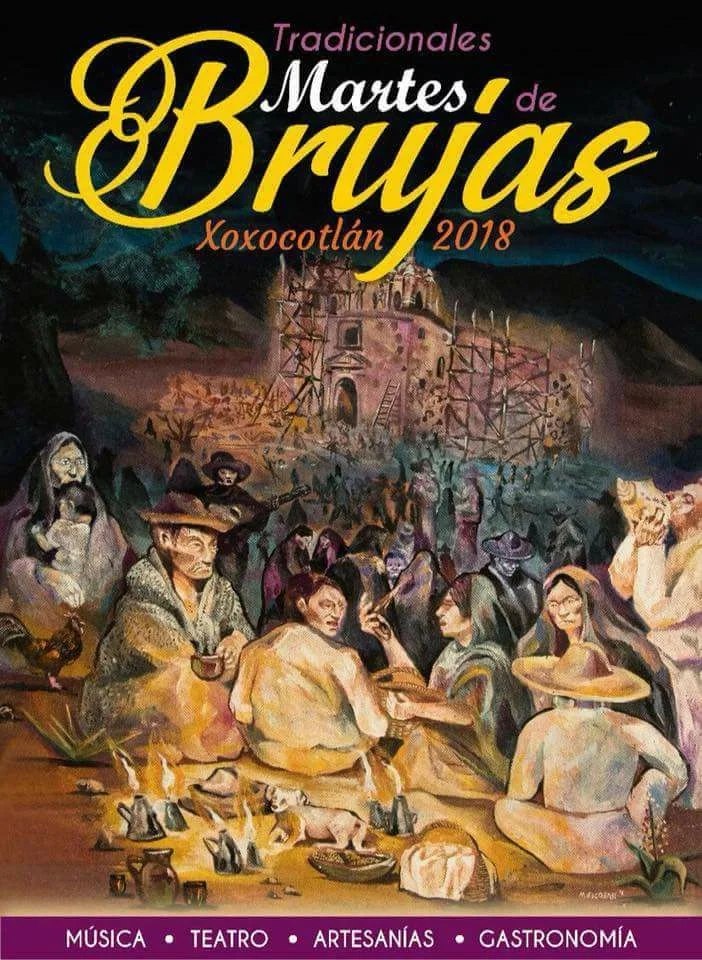Panteón Viejo (Old Cemetery), Santa Cruz Xoxocotlán, Mexico
A statue of a Saint is called a Santo.
On 31 October, exactly at 3pm, church bells ring a chorus called “Los Angelitos” (little angels) and braziers with copal burn by the altars. This is to welcome the souls of the deceased children who come to visit until 3pm the next day. On the 31st at 11pm at the Church of Santa Elena de la Cruz, a procession with an image of San Sebastian winds through the streets to the Panteon Viejo (Old Cemetery) where the first chapel built for the community was constructed in the 17th century. Here candles, prayers and songs are offered for all the dead.
A Catholic brotherhood known as “La Capilla” holds a prayer service accompanied by Latin chants.
Saint Sebastian’s martyrdom by arrows recalls the uncertainty of life, and the abruptness of death.
Ceremony outside the ruins of the San Sebastián chapel.
The two most important celebrations held in the municipality are “martes de brujas” or Witch Tuesdays and Day of the Dead. Tuesdays during Lent are called the “martes de brujas” or Witch Tuesdays. On these days, tamales with panela cheese are sold along with atole. The fourth Friday of Lent is called the Friday of the Samaritan, which is celebrated in the atrium of the town church with the sounds of bells, music and fireworks. The event ends with Mass. Lent ends with Holy Week, which includes a Passion Play. The fourth Tuesday in Lent has been host to an annual musical event called the Martes de Brujas since 2005. In 2009, the event included groups such as Sonora Santanera, the Dueto de Cuerdas de Oaxaca, El Grupo de Danzón and Lizet Santiago. The tradition of “Witch Tuesdays” dates back to the colonial period when Friar Domingo de Santamaría promoted the construction of a church with volunteers working nights. Women would come to offer tamales and atole to the volunteers, lighting their way with a type of lamp called a “bruja”, which contained a candle protected by paper shields. The consumption of tamales on these Tuesdays has been practiced since but in the 1970s, cultural events began to accompany the ritual.
Text from Wikipedia


